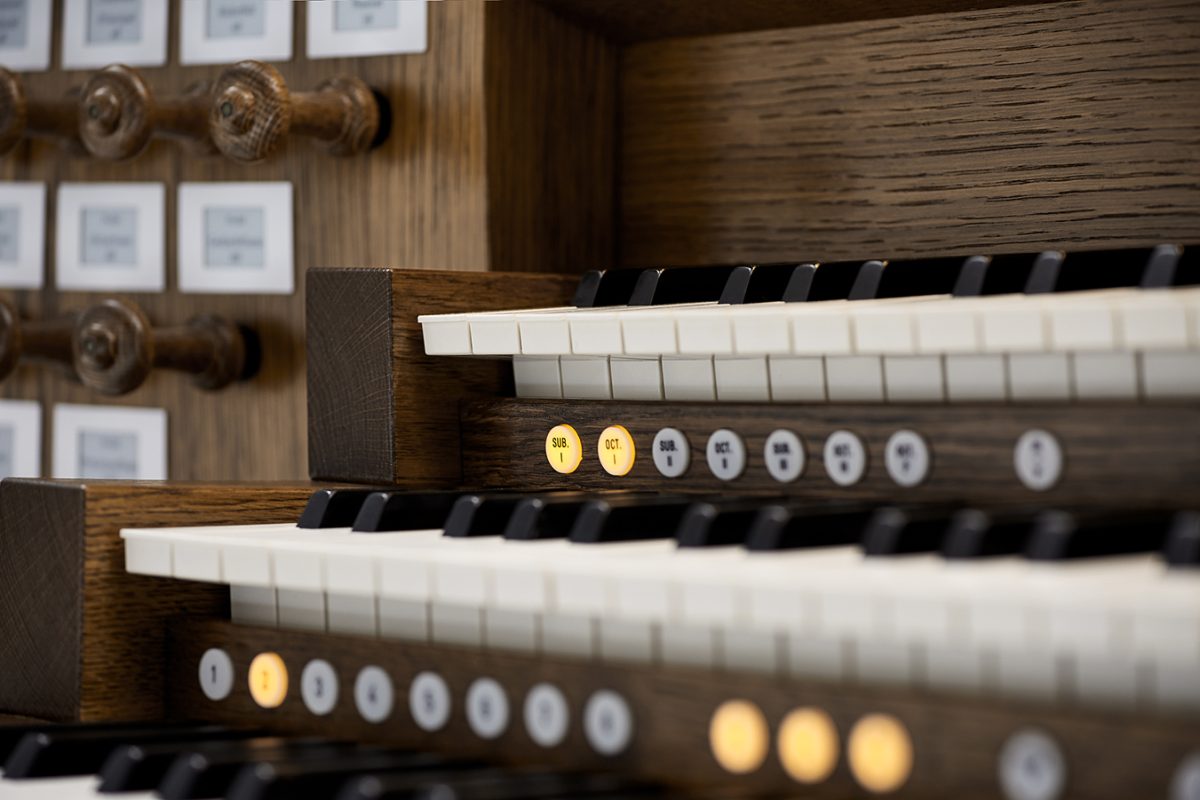From a customer:-
A few weeks ago, I received a missive from Church Organ World, informing me that there were new sample sets available to be used with my Johannus LiVE III organ. As I already had some, I didn’t take much notice, but later that day my wife raised the subject and thought that I might do some more investigating. So I rang Dr Harrington and after some discussion I decided to buy two of the announced sets. These were ‘The Holy Name Manchester’ organ, made by William Hill and sons, the construction of which was begun in 1870, and the Dutch organ from ‘Oude Kirk’ Vater organ, a baroque instrument, which began life in 1726.
The new samples arrived and were installed. I thought I would try out the Manchester Romantic organ of 48 stops first. So, without looking, I just pulled a stop out. The one I had selected was an 8 feet Tuba stop. Wow! The fanfare I improvised on it really ought to have summoned the dead to open their graves and walk around; the sound was truly amazing. If every stop was as good as this Tuba, then indeed my money would have been well spent.
By contrast to the Tuba, the organ has a lovely Voix Celeste, gentle and calming when used with the Viol De Orchestra the contrast couldn’t be greater. Being a Romantic instrument, it has solo stops of Clarinet, Oboe, Trumpets, Ophicleide, [Berlioz would have been delighted], Trombone, Vox Humana, and so on. Each of the 48 stops has an individual voice of its own. And in combination, the sound of the organ is full, warm and rich. I played Parry’s Elegy as a try-out and was not disappointed.
The instrument sounds wonderful, whether you play hymns, English organ music, such as Whitlock’s 5 Short Pieces, or Postludes by Stanford, or whether you just want to play quietly to yourself for practicing or communing and just improvising. I have not found a weakness anywhere, and I am delighted with it; it is, perhaps, the best to date of any of the sample sets produced.
The Oude Kerk organ is a baroque instrument of 54 stops, which is obviously more suitable for the repertoire of Sweelinck, Buxtehude and the North German school, ending in Bach. The stops are laid out in continental fashion rather than the English way, and it takes a bit of getting used to, but is more authentic. The organ does not give up its secrets easily, but when you find them, the rewards are very beautiful. There are a great number of mixture stops, and I will be exploring the sound of this organ for many months to come, and expect to be surprised every day by finding something new. And you can’t ask for much more than that.
In conclusion, Bach sounds terrific, but so will any good quality organ music, and I also have no hesitation at all in saying that it’s well worth your money to investigate the sounds. You won’t be disappointed.

